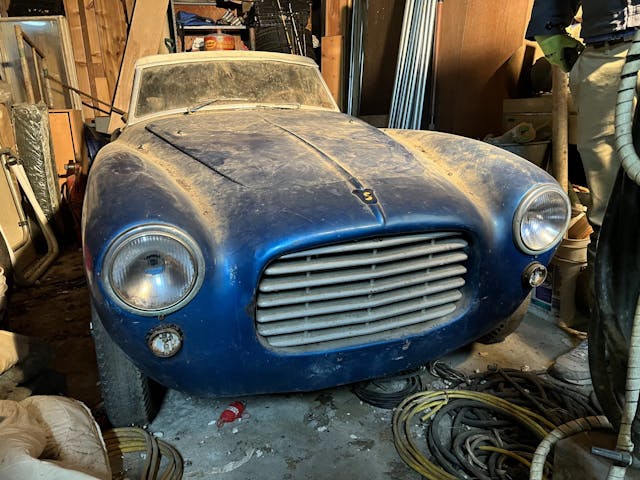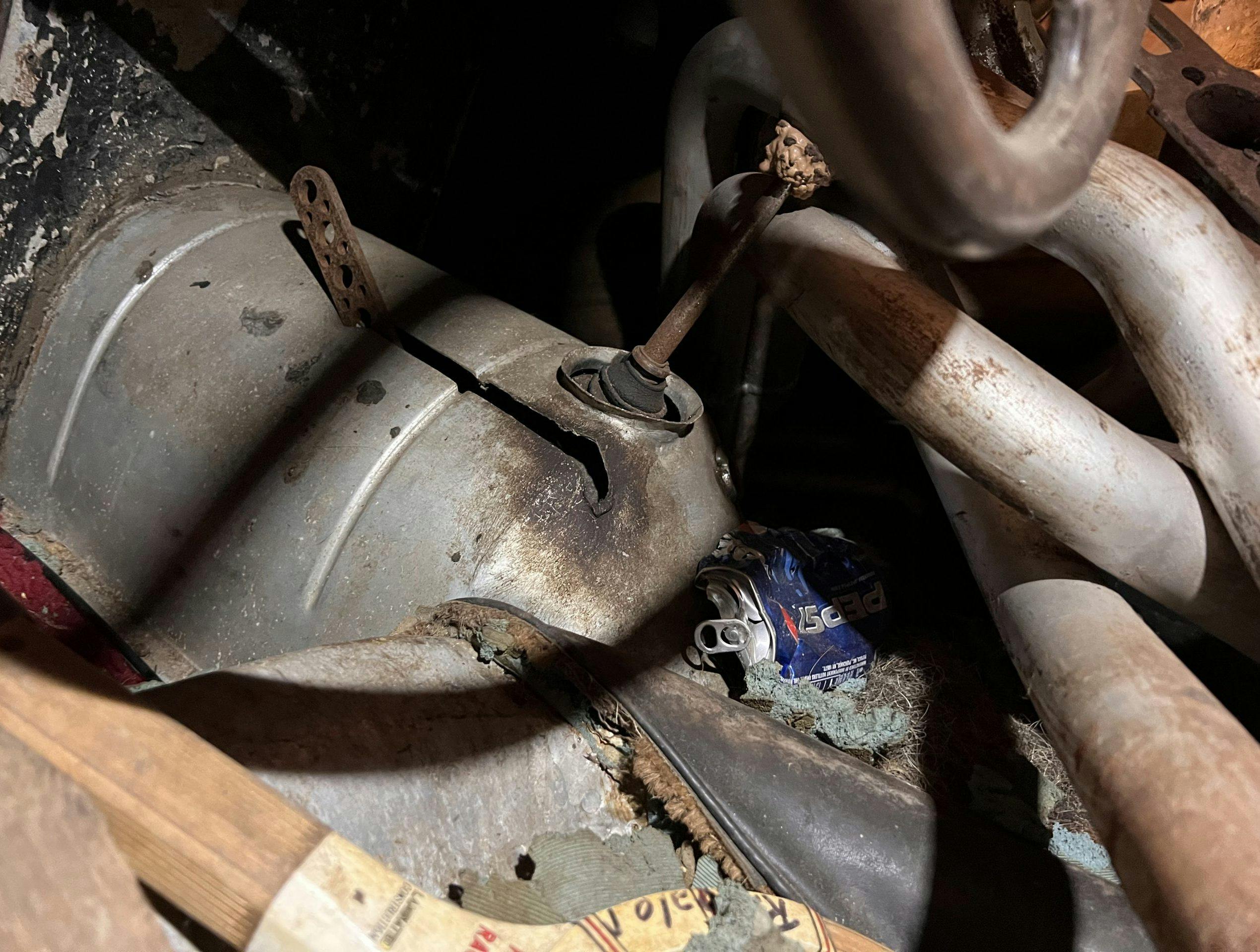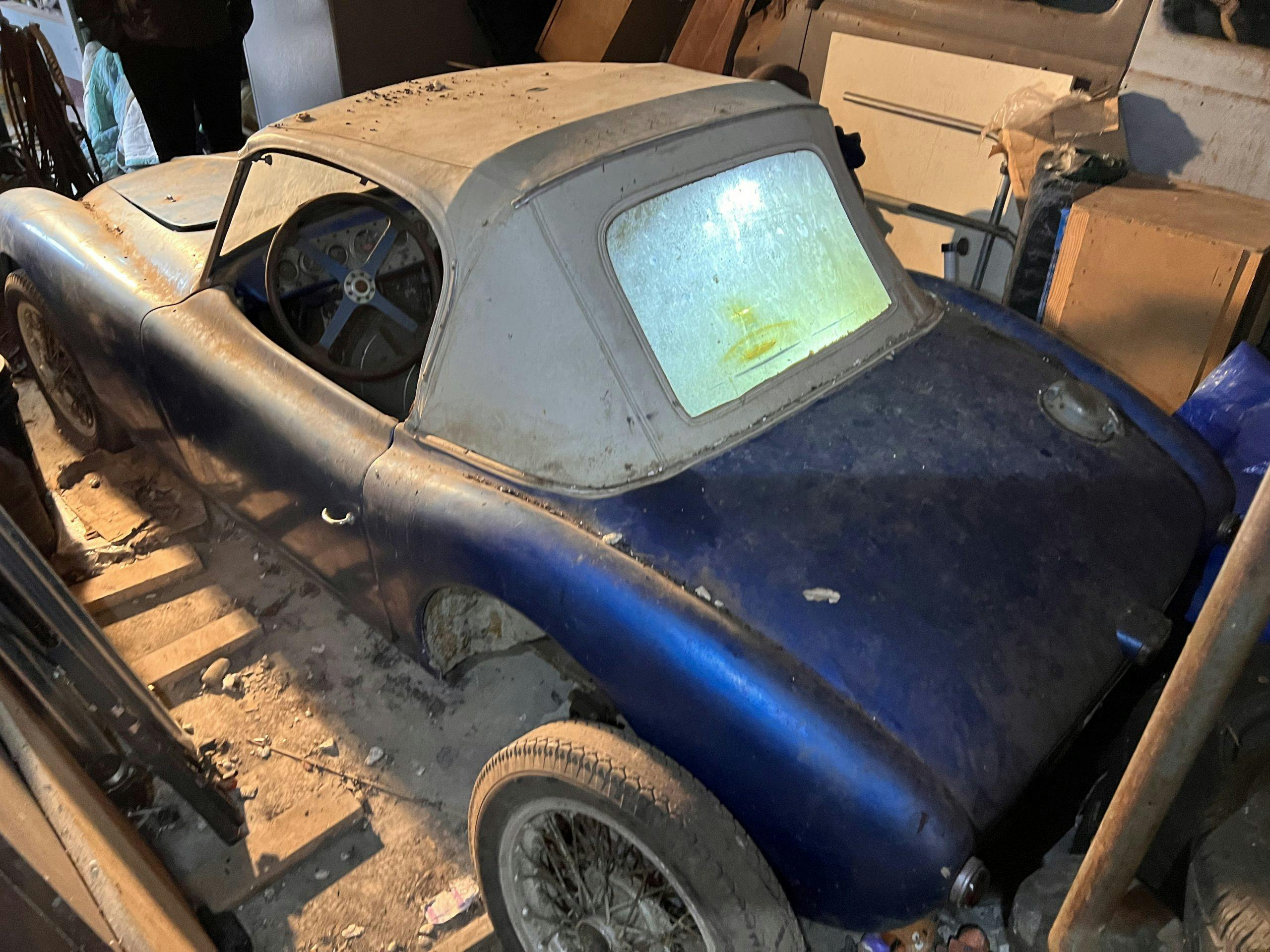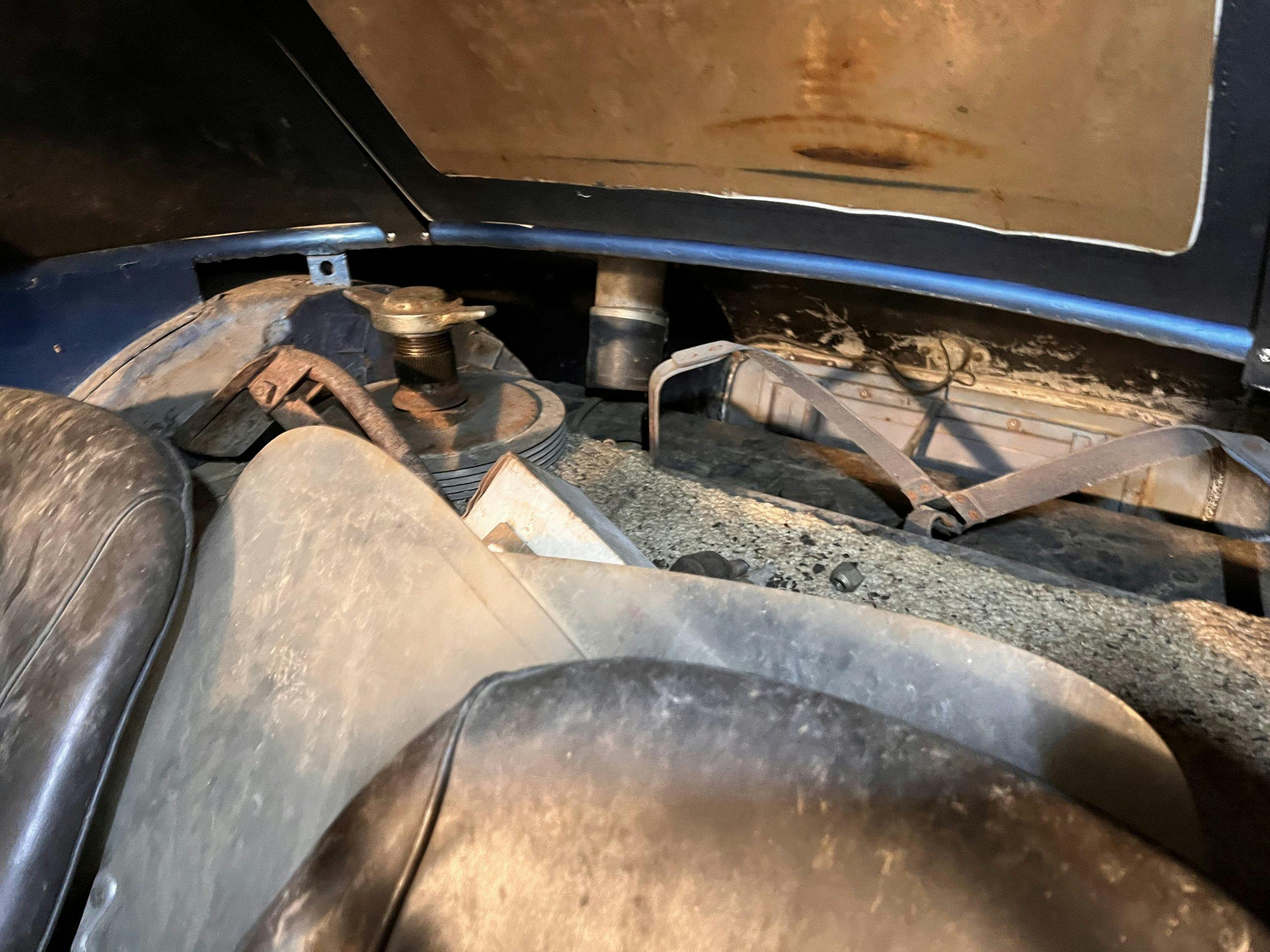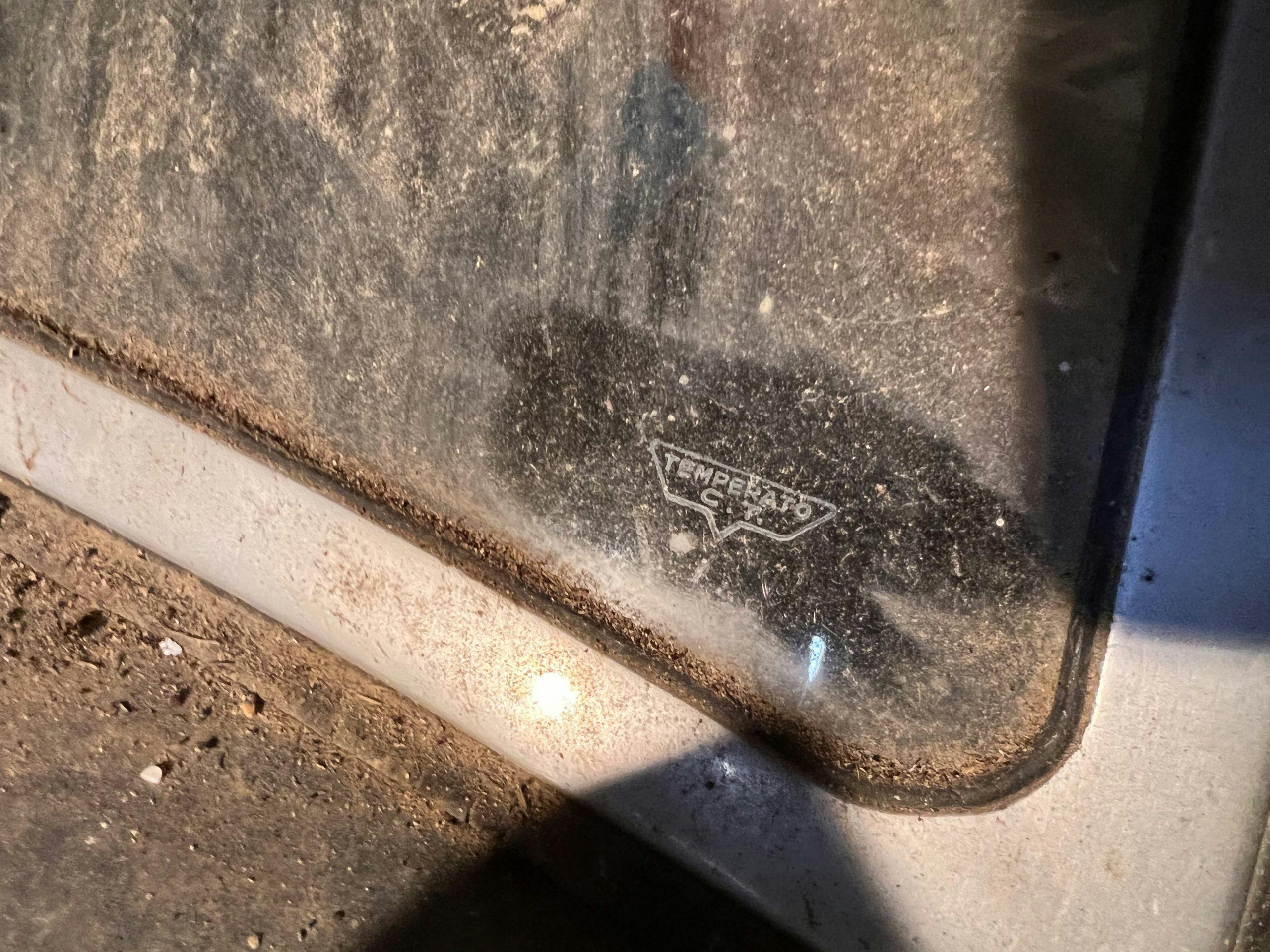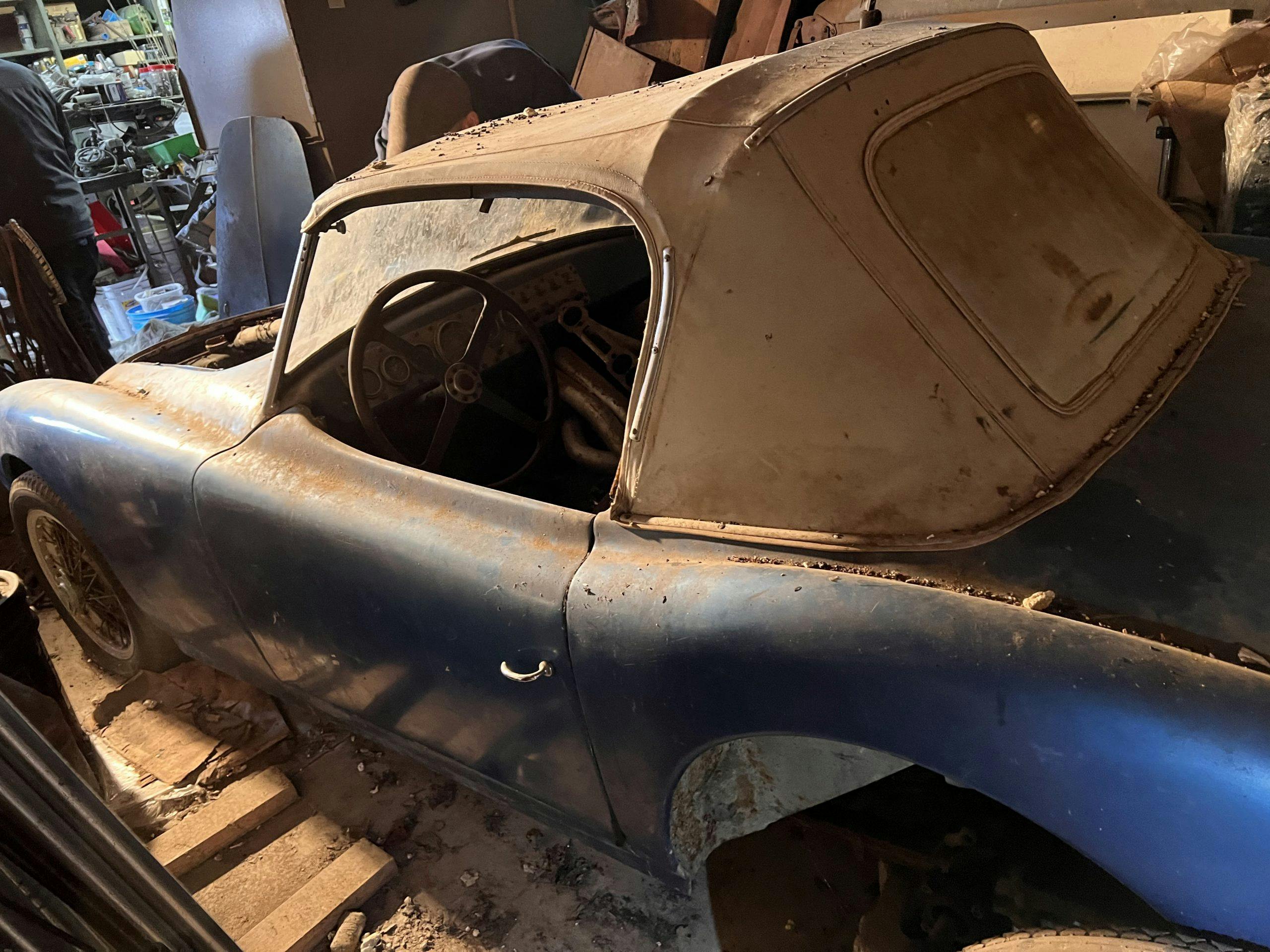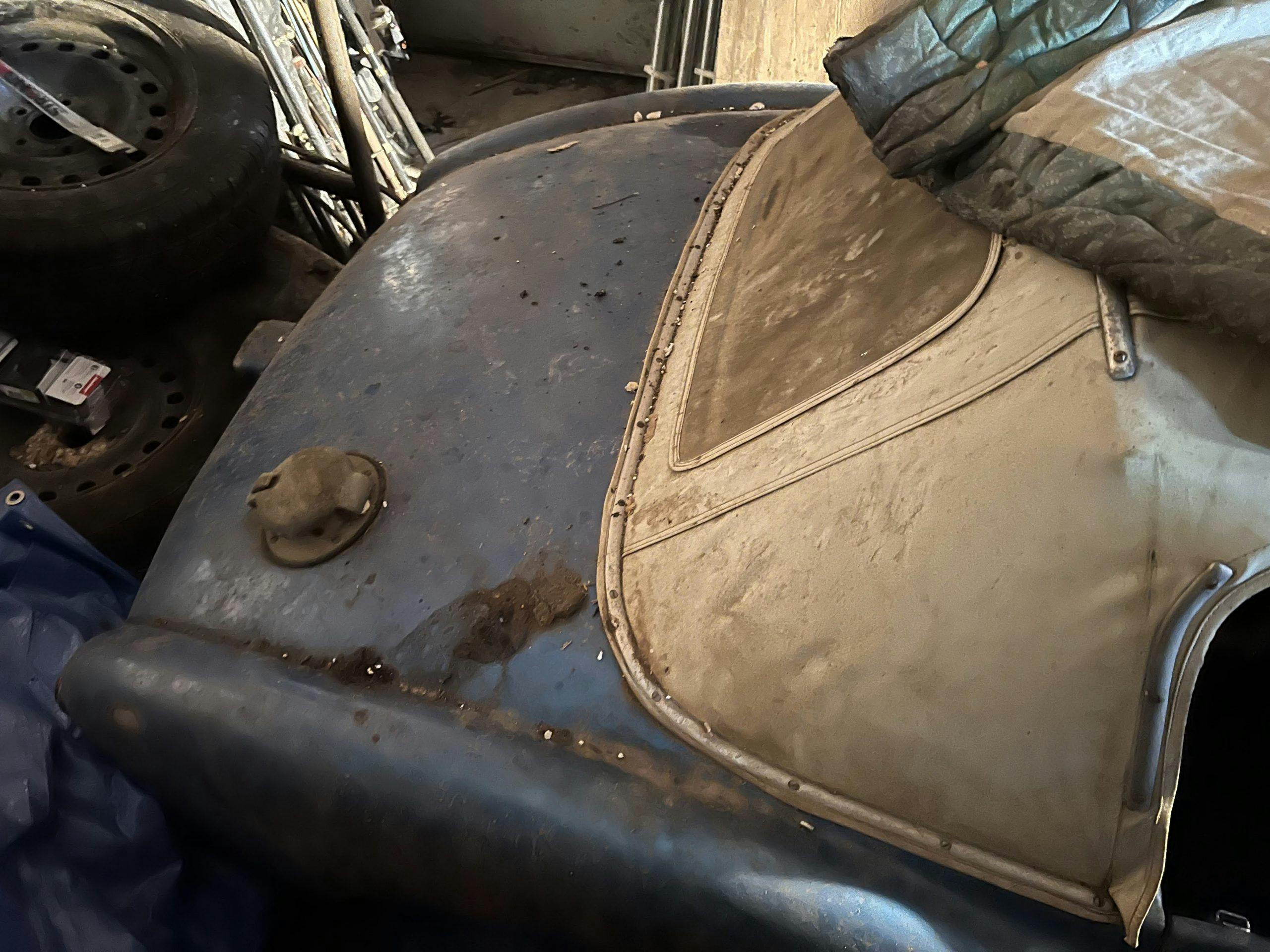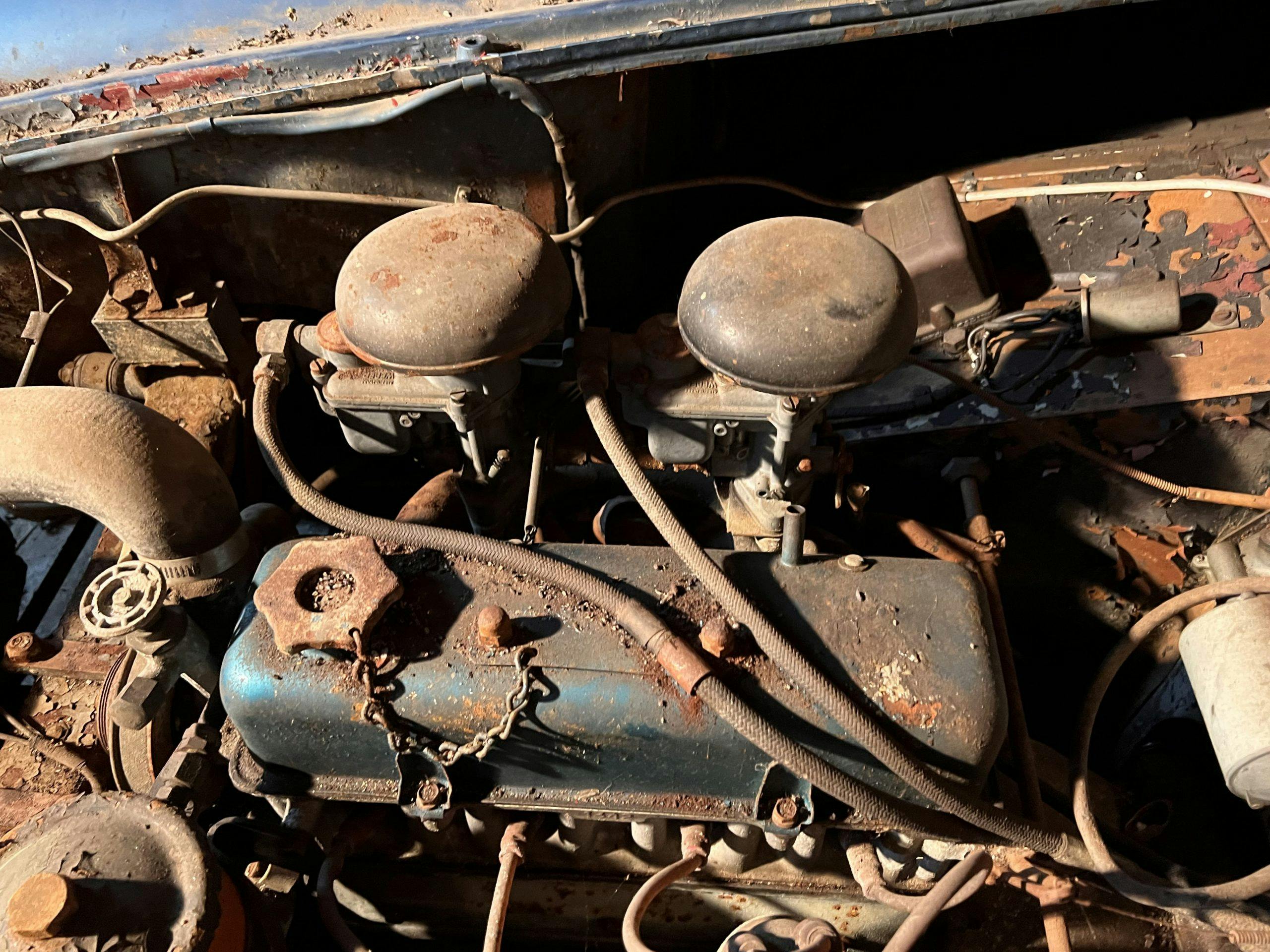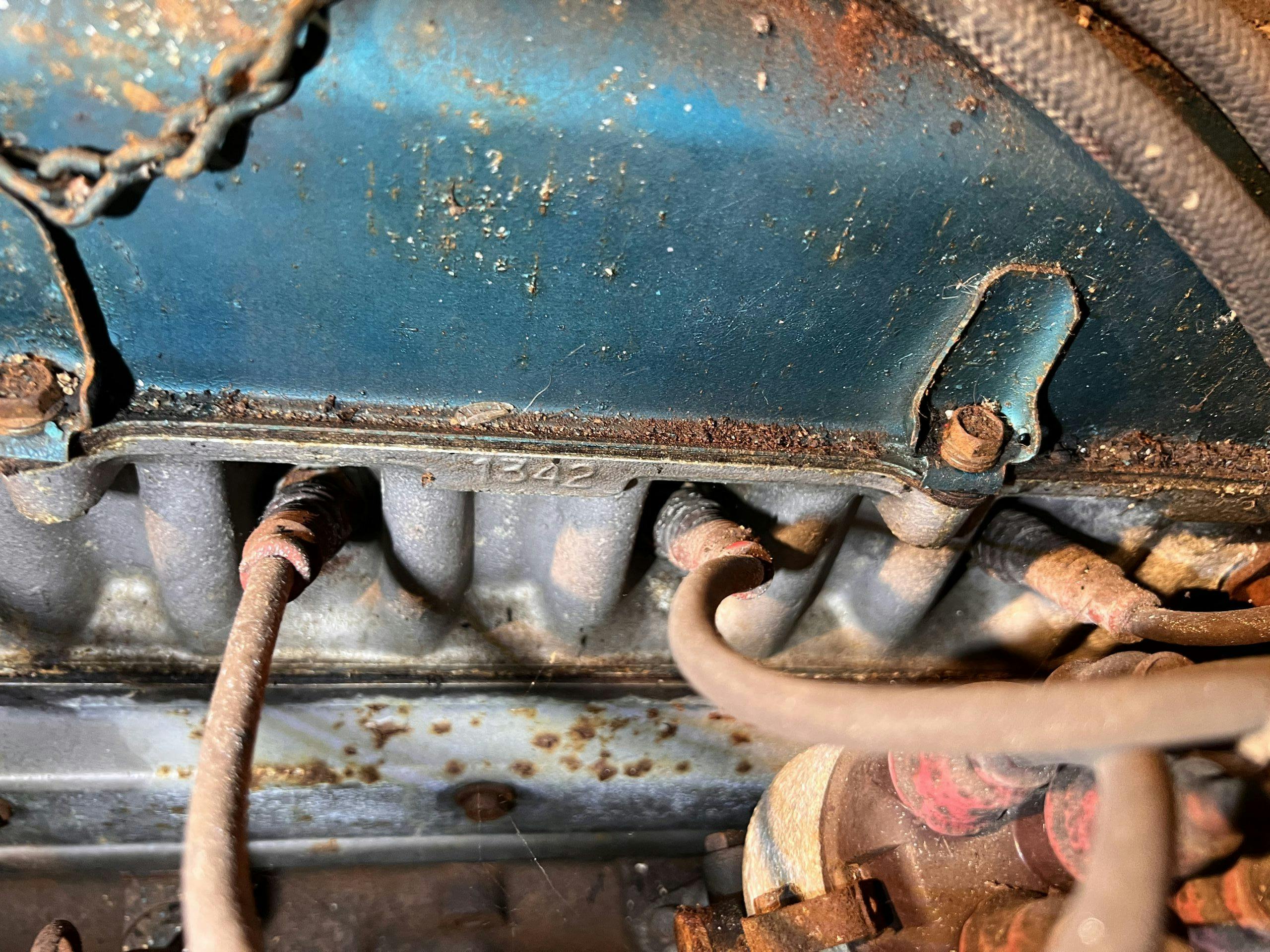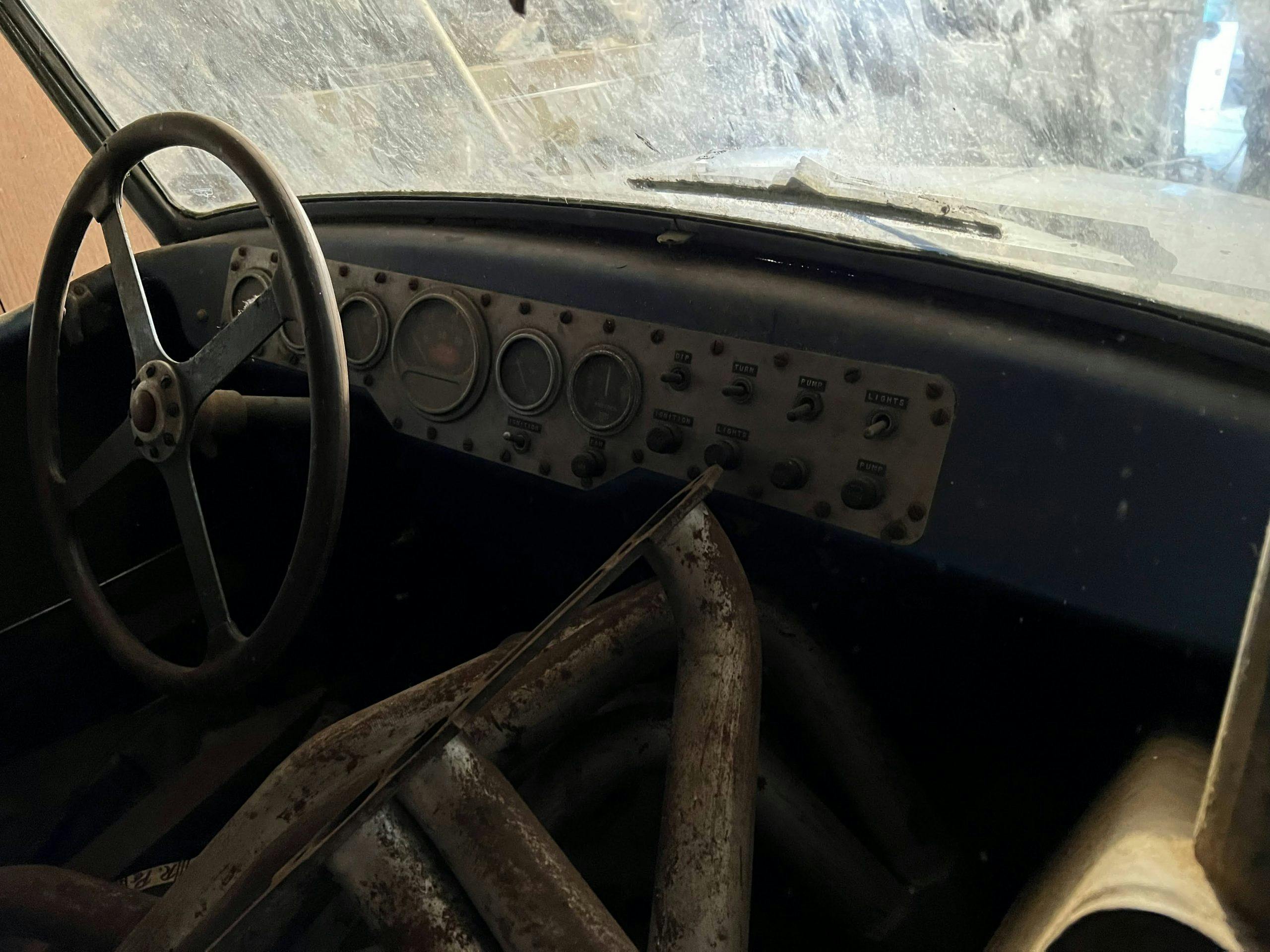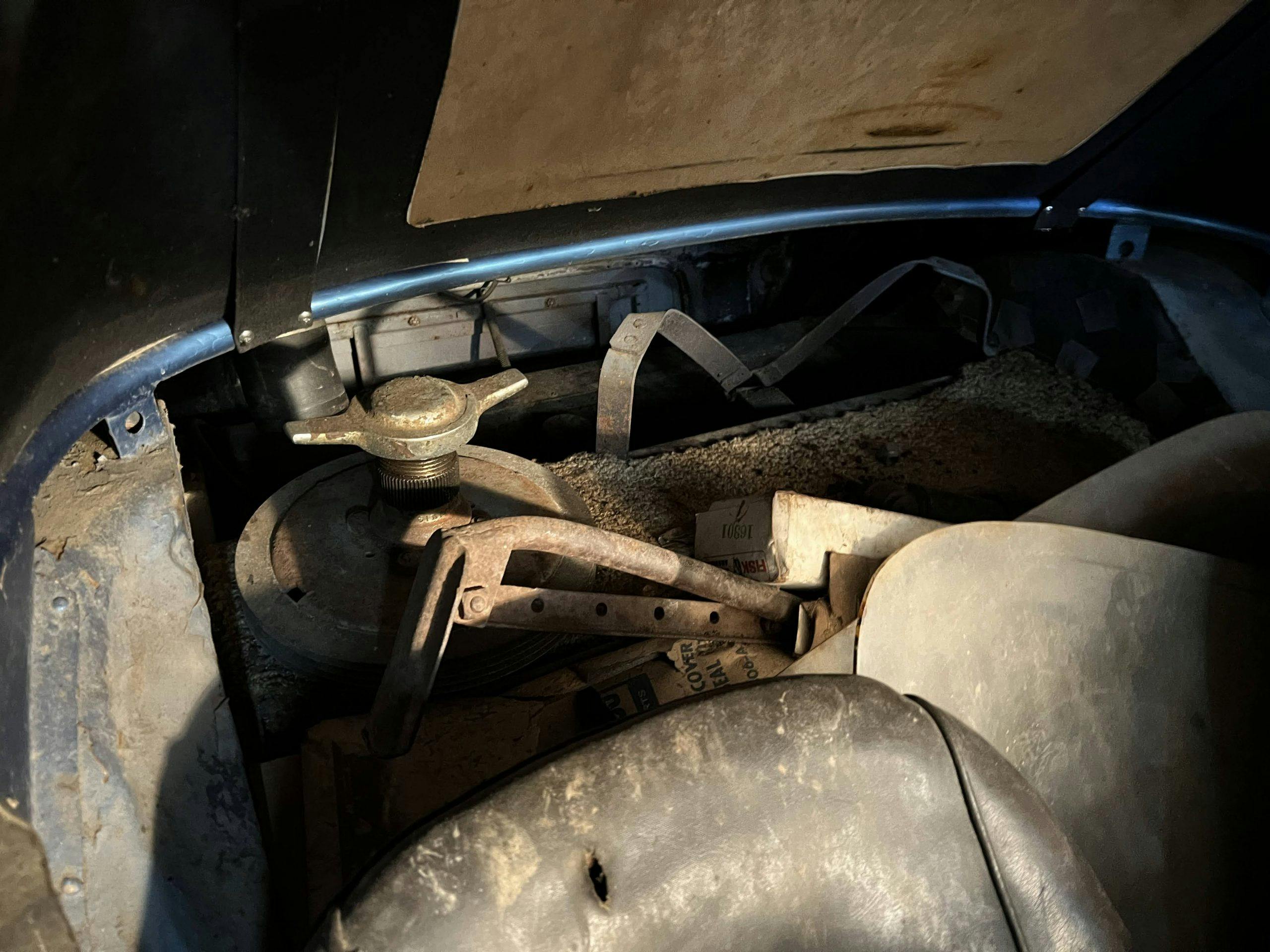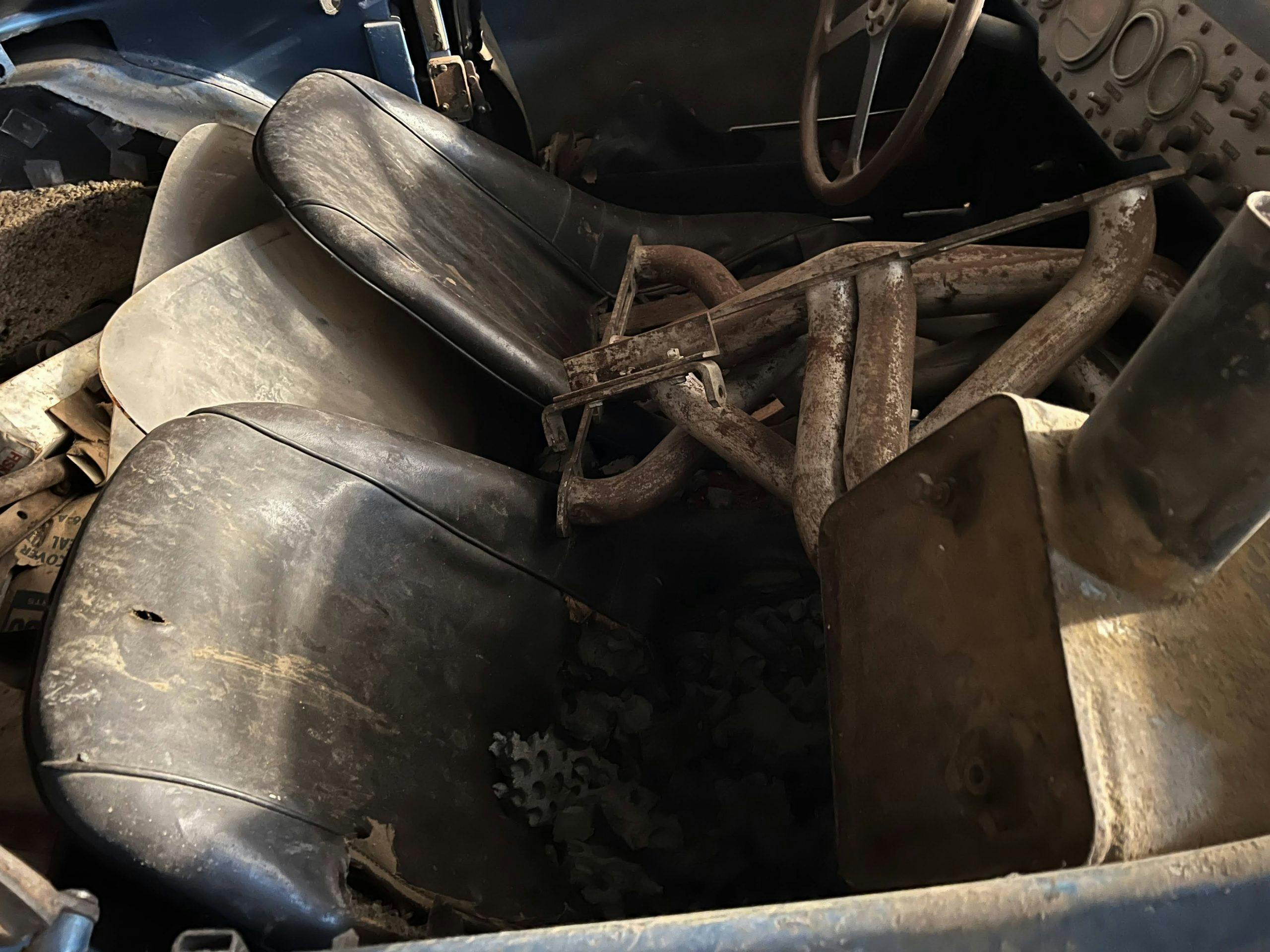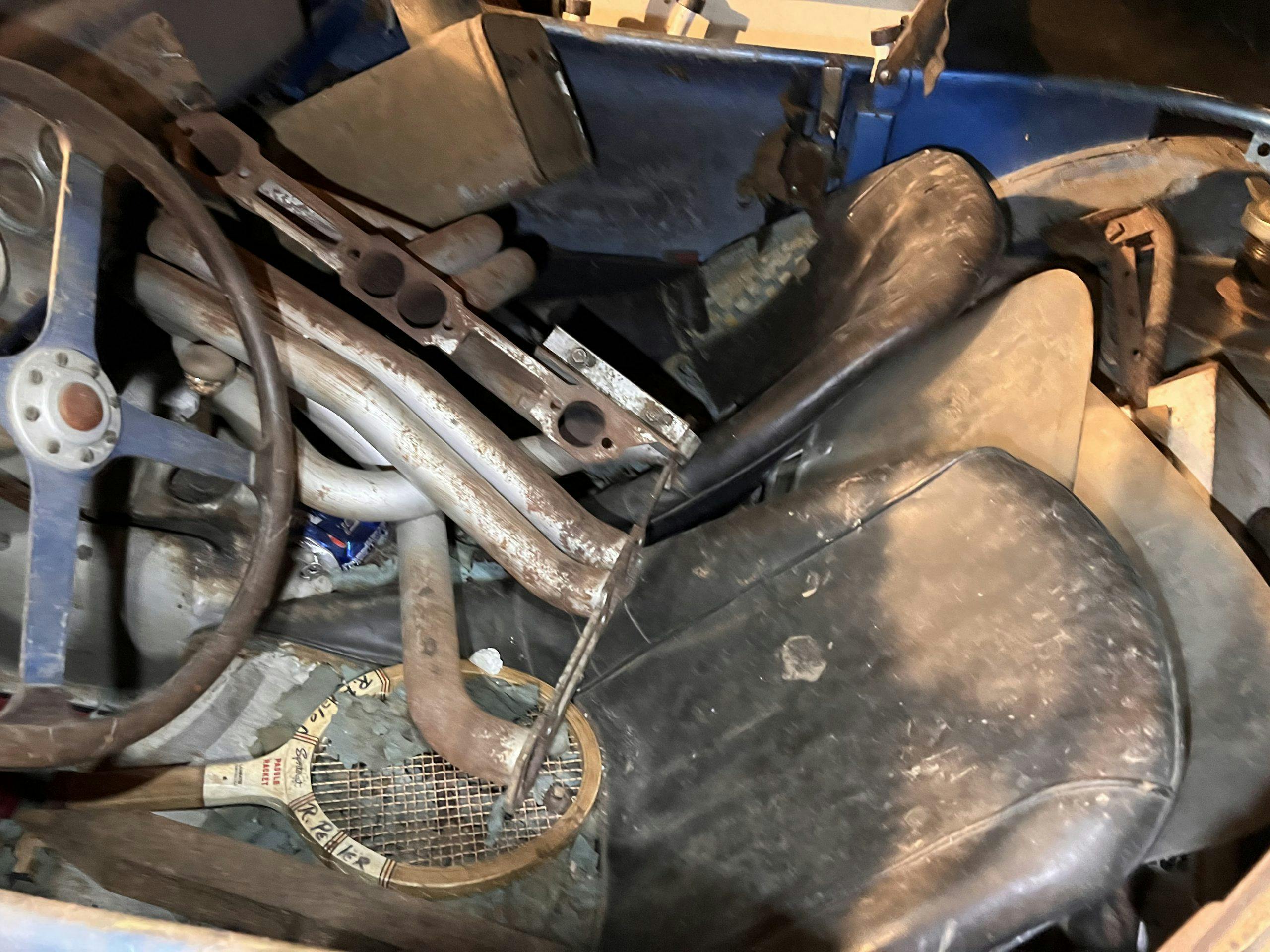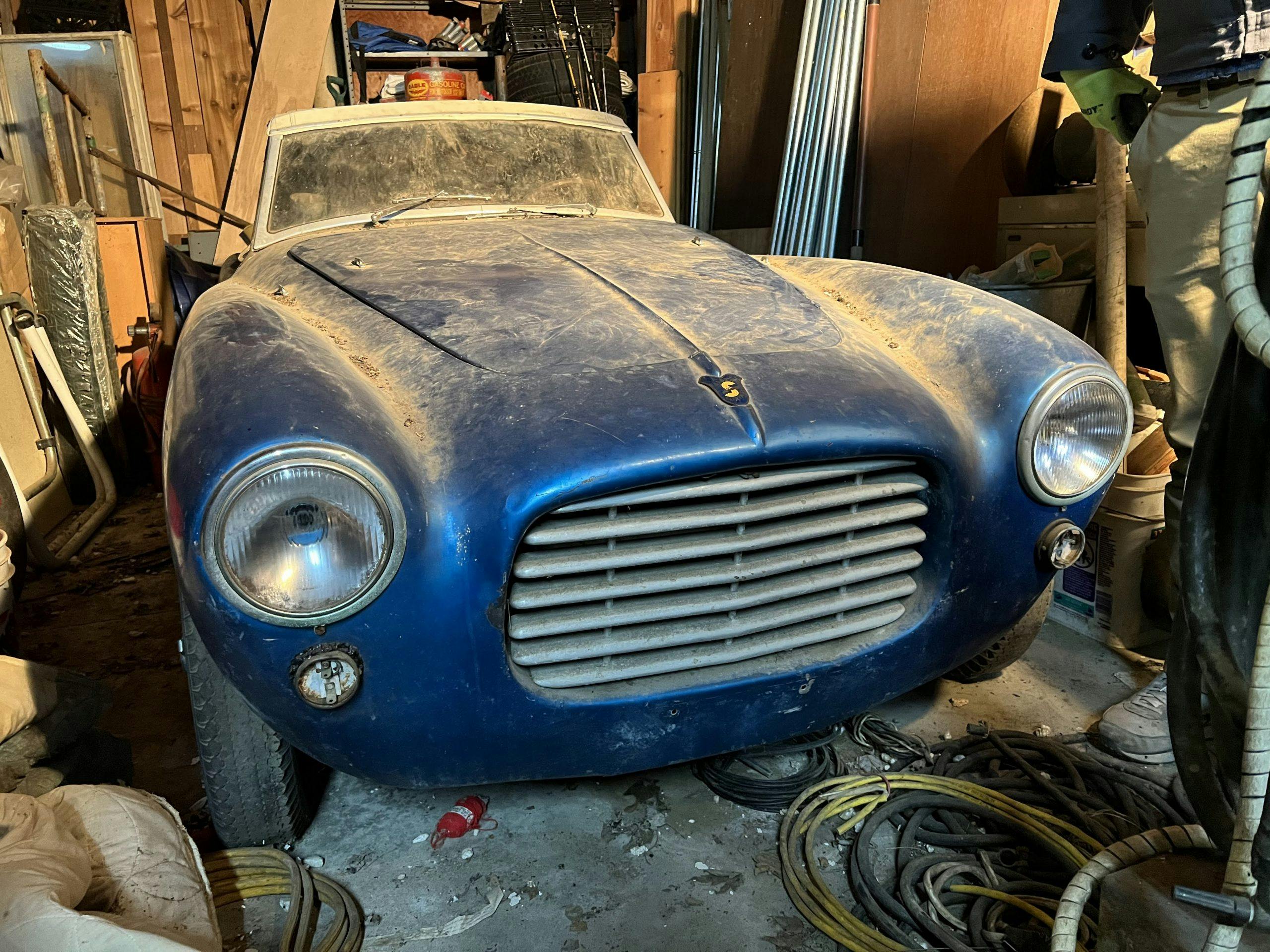Media | Articles
Rare barn-find Siata ends 50+ year slumber with hope for restoration
Anyone in the restoration business knows that, when the phone rings, you never really know who or what will be on the other end of that line. Even when those magical words—“barn find”—enter the conversation, there’s no telling if it’s going to be a gem or a dud. When Across the Pond Restoration of Willoughby, Ohio, got wind of a story concerning an old Italian race car tucked away for 50+ years, practically right under their noses in Northeast Ohio, the team didn’t know what to believe.
When you’ve got a lead on rare Italian royalty like a 1955 Siata 300 BC, however, you hustle—layers of ambiguity be damned. When the call came in, Levi Nolan and his brother Jesse, co-owners of Across the Pond, raced across town to the spot to investigate further.
“She [the owner] called it a 1955, and originally thought it was actually a 208S,” recollects Levi. “So I’m racing to the shop thinking it was a 208S too, like, ‘oh my gosh, Jesse, we’ve got to call this lady back right away ‘… You get a hundred calls a day for cars we don’t work on, so to get a [special] once-in-a-while call, it’s very exciting.”
Upon arrival, they soon realized that they were not dealing with the mother of all Siatas, a 208S, which would have meant a seven-figure sales tag. The 208S was a little sports car from a little Italian tuning company, but it made a big impression on the high-end automotive world when it arrived for 1953. The combination of its coachbuilt Motto aluminum-alloy body and torquey V-8 engine made it appealing to serious enthusiasts like Steve McQueen, who famously bought a ’53 208S that he dubbed his “little Ferrari.” Instead, the Siata in question was a 300 BC, a 1955 model. It’s still a six-figure beauty but a little more common than the 208S (one of 50 versus only 33), and less powerful (inline-four vs Fiat V-8).

After explaining the situation to the owner, who was bequeathed ownership of the car from her husband, there was a minor a tinge of disappointment on both sides. But that didn’t overshadow the incredible fact of this car’s discovery in a little town outside of Cleveland, and that it had been hidden there for so many years.
Marketplace
Buy and sell classics with confidence
“This is the last place on earth you’d think it’d be,” Levi adds.
Siata is an acronym (S.I.A.T.A.) standing for Societa Italiana Auto Trasformazioni Accessori. If that was too much Italian for you, just know Siata had been a small tuning outfit for Fiat, and that a guy named Tony Pompeo was the importer largely responsible for Siatas in America—more specifically, the 300 BC. Though these cars most often came equipped with 750cc Crosley four-cylinders, many of these cars were shipped to the U.S. without engines, and upon landing, they occasionally received something a little beefier in anticipation of racing in various displacement classes on up the chain.

Later examples—such as this car, ST444BC—rolled off the line with a Fiat 1100 engine with Weber carbs. 300 BCs were bodied by Motto at this later point in the production run, rather than by Bertone, which built the earlier ones. Records suggest that, after being purchased new from Pompeo, this car was raced in the mid-1950s by an Ernst Ruffini, a Cleveland native, who frequented many of America’s iconic racing haunts such as Cumberland, Lawrenceville, Watkins Glen, and Road America. As the story goes, ST444BC could no longer remain competitive in Ruffini’s desired class and he decided to sell the car. It then traded hands several times in Cleveland’s enthusiast circle, last doing so in 1960, and eventually landing in its current place of rest.

Fate will decide where exactly this 300 BC will go from here, but things are looking up. There’s a hefty load of back-end legwork that Across the Pond has to tackle first, though.
“We’re establishing values, collecting paperwork and documentation on the race history. Once we have everything, we’ll reach out to our customers who have shown a little bit of interest,” says Levi.

A pharmacist by trade, Levi finds himself typically filling different kinds of orders these days after helping Across the Pond get up and running back in 2015. His brother Jesse is a Navy veteran and fabrication whiz. A third valuable member of the crew is Pat Slayton, a Marine Corps veteran and Ohio Technical College graduate in classic car restoration—the same program Jesse attended. As the business grew, their checklist of European projects has blossomed. Current projects going on in the shop include an Aston Martin DB5, Ferrari 330 GTC, and BMW 3.0 CSL “Batmobile,” and a Gullwing that just arrived in early December.
Given the amount of labor, Levi is understandably now only a part-time pharmacist.
Across the Pond has also partnered up with McPherson graduate and RPM Foundation scholarship recipient Randy Elber. For the last three years, Elber’s been running R&R Automotive Restorations out of Mount Kisco, New York, and routinely working in tandem with the Nolan brothers, each doing what they do best.
“911s are our bread and butter. Since we’ve connected with Randy in New York, we’ve gotten into more exotics. Expanded our palette,” Levi says. “Typically, we get the engine and drivetrain out and send it up to him [Elber]. Then we do the paint and bodywork and meet in the middle on the install.”

208S or not, this 300 BC is a hell of a find, and not just for niche Siata fans. The importance of preserving a vehicle of this caliber before it’s lost forever should not go understated. Not to mention that the degree of skill and effort that goes into researching, valuing, and restoring a car like this is immense. There have been hurdles, too, beyond unavoidable global supply-chain issues. The big one is a titling snafu (another 300 BC restoration without numbers was already titled ST444 before the find), but the team is still forging ahead to take this job to completion.
“I can’t wait to get it out of the spot and get going on it,” says Nolan. Neither can we.
